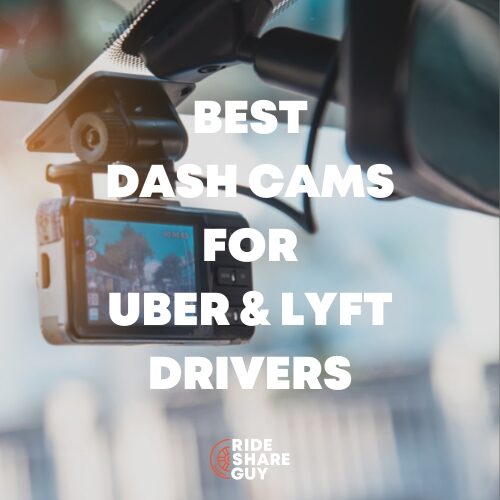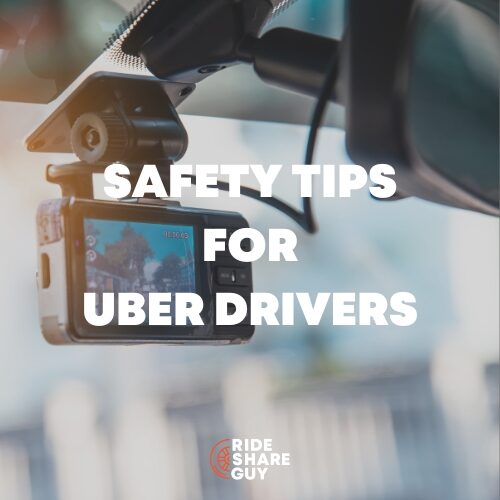Lyft recently emailed drivers, notifying them that they would need to take new mandatory safety training in order to continue driving on the Lyft platform. We had senior RSG contributor Jay Cradeur take the training to see what it’s about, how it helps drivers, and what this means for drivers-as-employees.
Recently, I spent 30 minutes going through Lyft’s new mandatory safety training program. I received a notification about this training program on my phone. In order to make the notification go away, I had to watch a series of videos. Other drivers received more information about this program, but for me, it was a series of annoying pop-ups on my phone.
The whole process left me with some serious questions. If I am an independent contractor, then why do I have to take mandatory training? This seems like something employees would have to do. And why does everyone have to take the training program? I have been driving for nearly 4 years and no one has ever complained about verbal misconduct. Let’s jump into this new program and get some answers.
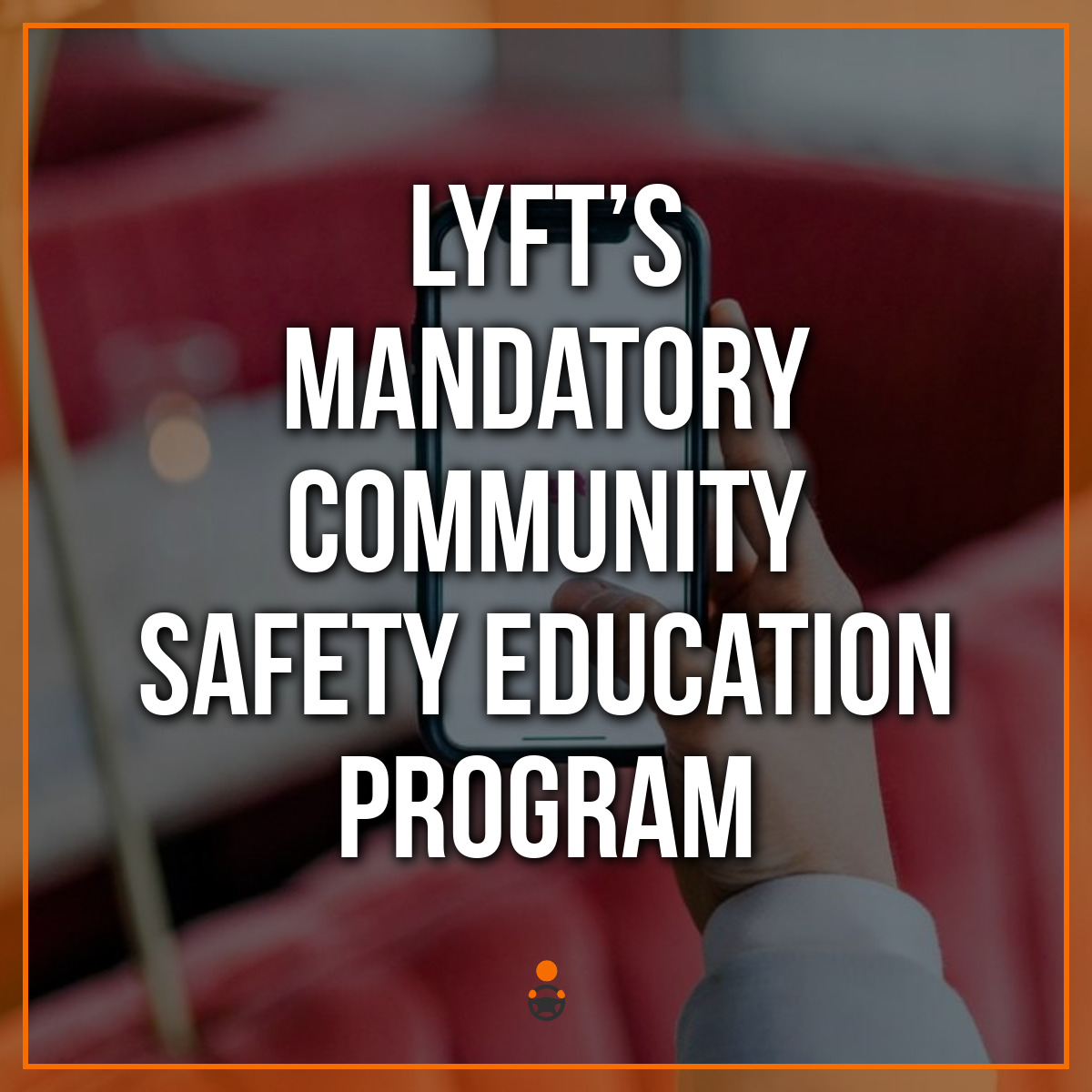
What is Lyft’s Mandatory Community Safety Education Program?
Recently, I found this on my phone:
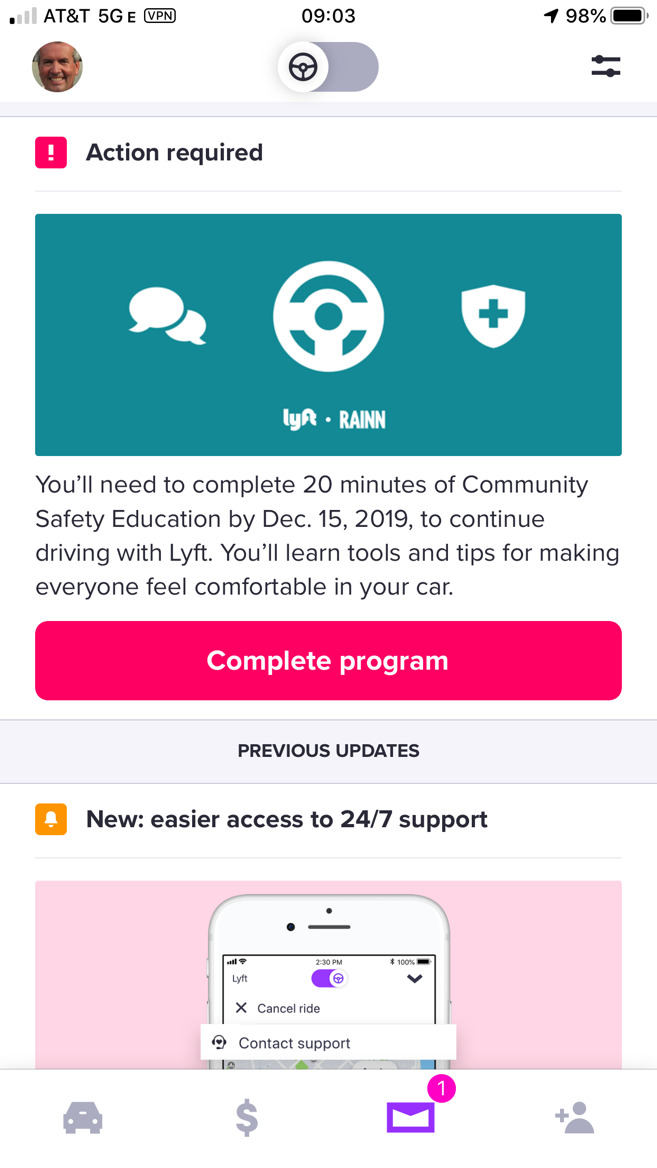
As you can see, the program requires a minimum of 20 minutes, although it took me closer to 30 minutes to complete. The notification will not go away until you have completed the course. The course is comprised of several videos ranging in length from two to four minutes. Here are some screenshots of the initial content:
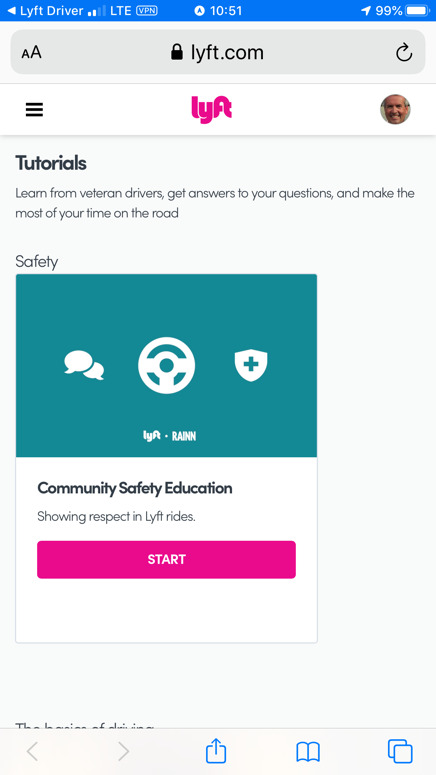
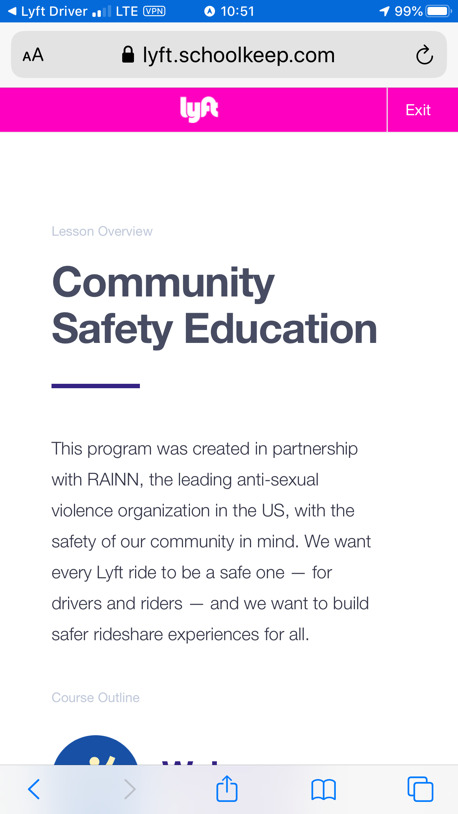
As I launched into the course, the topic seemed to focus on sexual misconduct. In fact, the company Lyft partnered with in creating this program, RAINN, is the largest anti-sexual violence organization in the US.
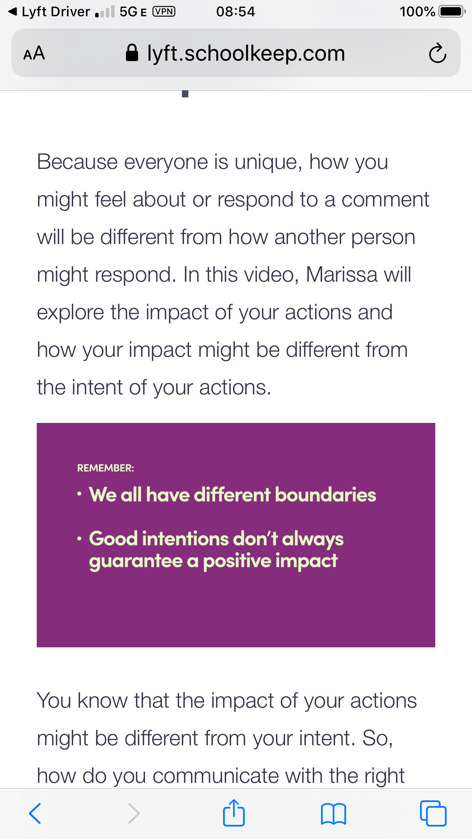
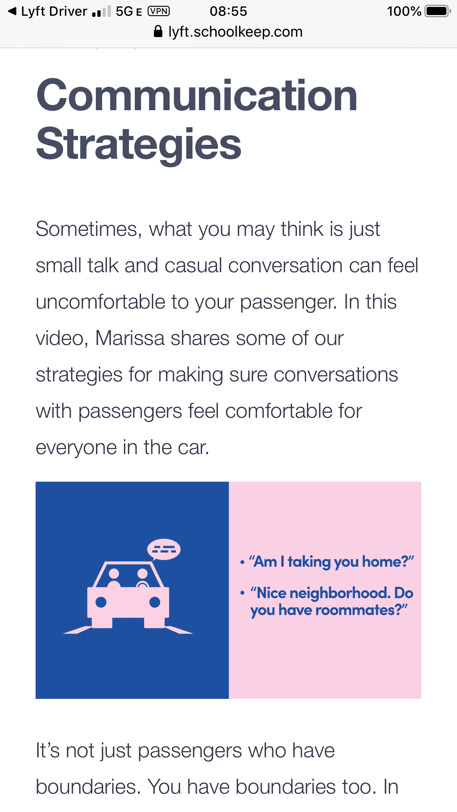
I found the content of the course to be excellent. While much of it is “common sense,” it is always good to be reminded of the importance of respect and boundaries and safety. Each passenger is different and responds to questions and comments based on their own individual life experiences. What one client will think is a harmless question, may seem intrusive or invasive to another passenger.
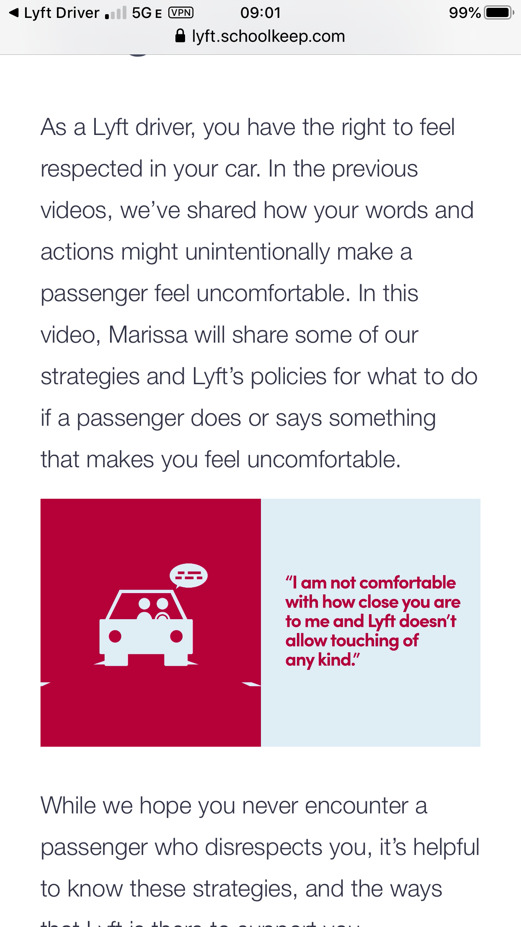
Being that I am a 6-foot 4-inch man, I have never had any experience in which I felt concerned or threatened. I was most definitely hit on a couple of times, but here again, it was easy for me to politely say “No.” If I were a 5-foot 4-inch woman driving at night ferrying drunk men around, I may have a very different experience.
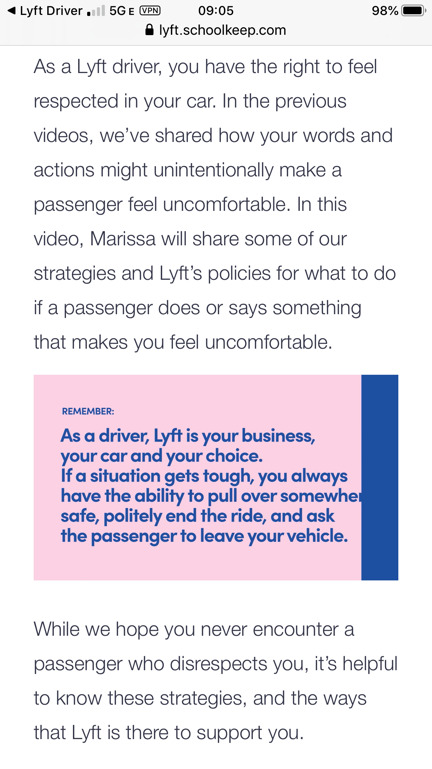
Here again, we see more education on exactly what a driver can and can’t do in order to deal with an unpleasant or threatening situation. For example, in the screenshot above, Lyft is reminding drivers that they always have the option to pull over, end the ride and ask the passenger to leave the vehicle.
In another part of the training, I received suggested comments in the case of an aggressive passenger. I remember hearing “I have a large personal space bubble and you are getting too close to me.” Of course, you also have the option to contact Lyft support after a passenger leaves your car in order to file a complaint about a particularly offensive or abusive passenger.
Overall, I feel Lyft is doing a good thing here. I found the course to be educational, and further heightened my awareness of the variety of passengers who enter my vehicle.
What Is The Deadline to Take the Lyft Safety Training Course?
Everyone who drives for Lyft must complete the course prior to December 15th. According to my Lyft app notification, if you have not completed the course by December 15, you will not be able to drive for Lyft until you sit down and watch the 20 minutes of videos. Our RSG contributor Paula had some trouble accessing the program. Here is her interaction with Lyft: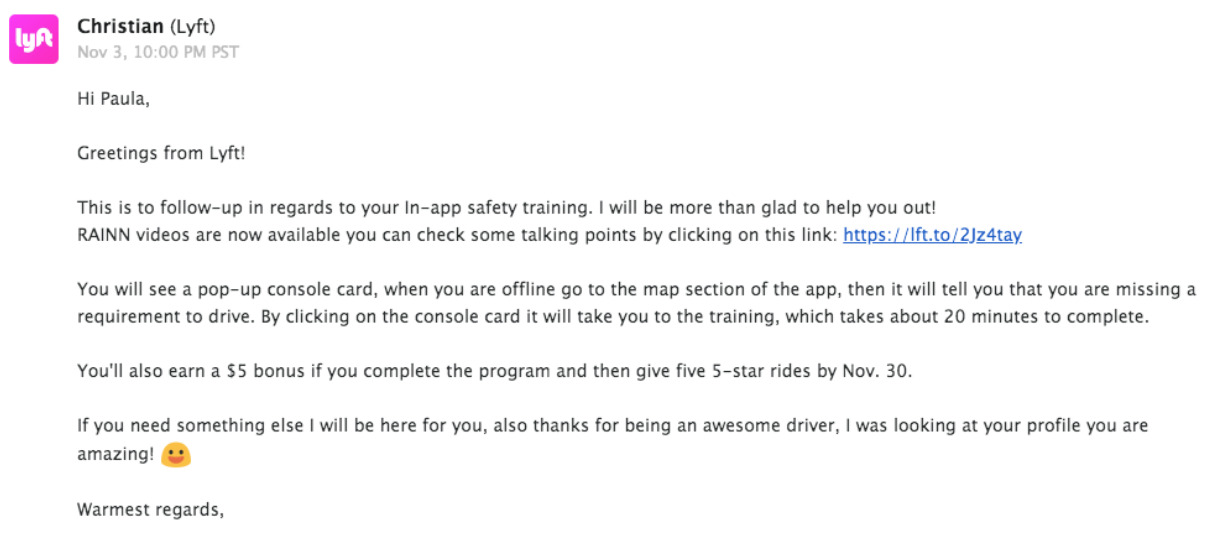
Paula replied to Lyft and let them know she still could not access the course.

Lyft apologized and told Paula not to worry about the training right now.
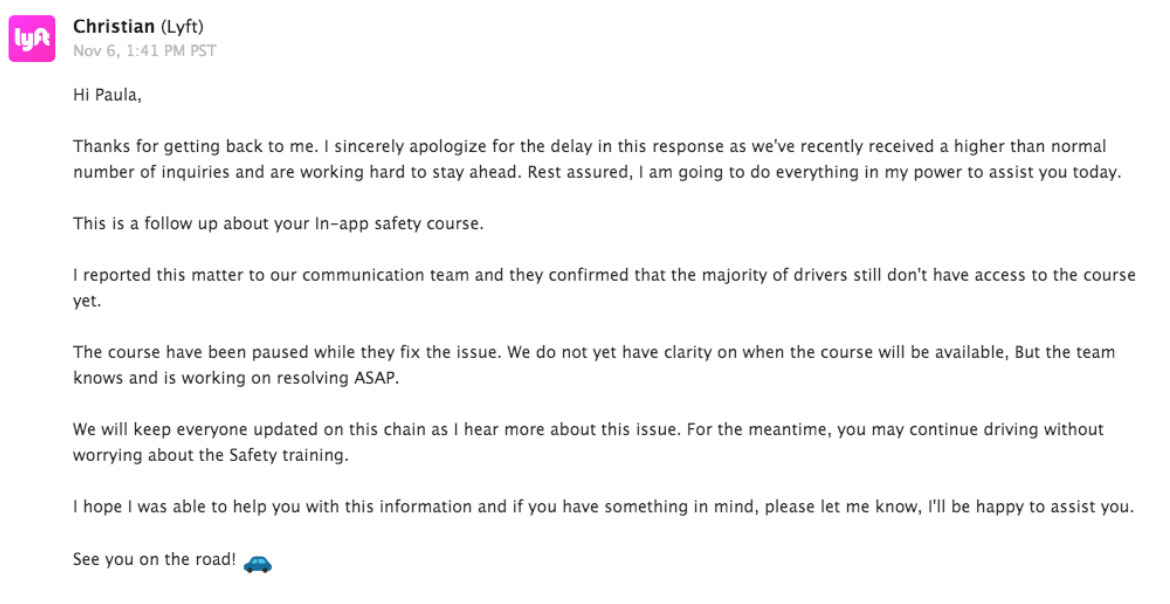
As of November 12, it looks like Paula now is able to access the course, but just in case you can’t access the training videos, reach out to Lyft so they’re aware of the issue.
Lyft Safety Training Program Bonuses
In some, but not all, markets, drivers are being offered a variety of bonuses from Lyft to complete the community safety education program. It depends on your market, but we’ve seen drivers offered $5 for completing the training by a specific date, whereas other drivers are offered $5 for completing the training and giving five 5-star rides.
I was not offered any bonus in San Francisco, but RSG writer Paula was offered $5 in Minneapolis for completing her training by November 30. What kind of bonuses has Lyft offered you, if any? Let us know in the comments below!
Can Lyft Legally Require Independent Contractor To Participate?
Since Lyft has control of the app, I suppose they can do whatever they want. If you want to use the Lyft app to drive and make money, then you will have to take this course prior to December 15th.
I don’t necessarily think taking this course is a bad thing. The course is valuable. What makes it somewhat unpleasant is we, the drivers, are Independent Contractors. We should not have to kowtow to Lyft’s requirements.
However, we do have to do what Lyft tells us to do. They say “jump” and we say “how high?” It is a paradox. We are treated as employees, but we don’t have the benefits of being an employee? In fact, if you or I worked for a different company, we would most likely be compensated for our time while we participated in the training program. Instead of driving for 20 minutes and earning revenue, I had to pull over and complete the course.
Such is the life of a rideshare driver. We will have to wait and see how AB5 pans out for those of us in California.
My advice to Lyft would be to pay drivers to take this training video if they want us to take it so badly.
How Effective Are The Videos?
I found the videos to be very effective. I noticed that while driving later in the day, I was far more cognizant of what I said to passengers. I also listened much more closely to the responses I was hearing. I found that I was quieter, and only spoke when I had a clear invitation to do so.
These are all valuable results from the course. When drivers can learn to be more sensitive to the passengers, that is a good result. Most importantly, the videos were short and to the point. Once you complete the course, you will receive a nice congratulatory email.
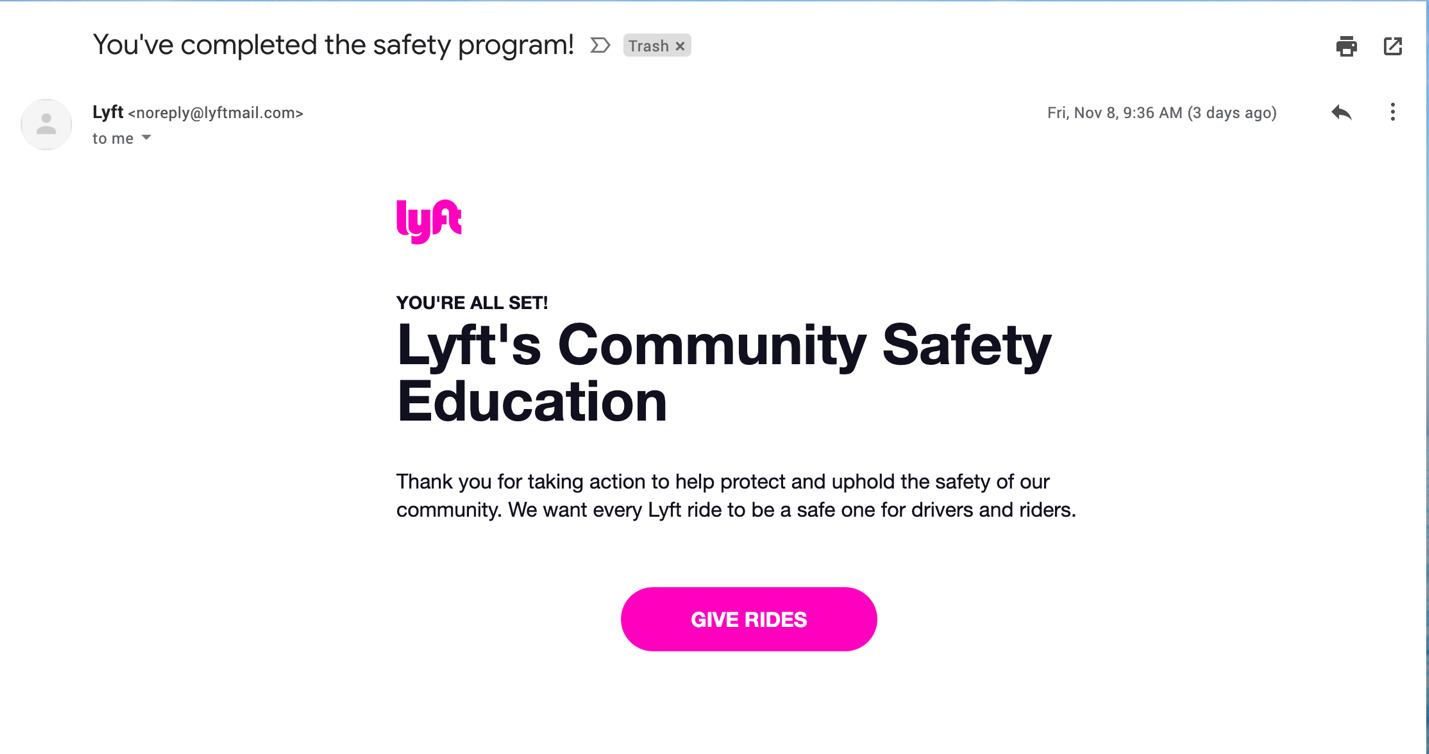
Further down, the email provides a thorough summary of the course’s tenets:
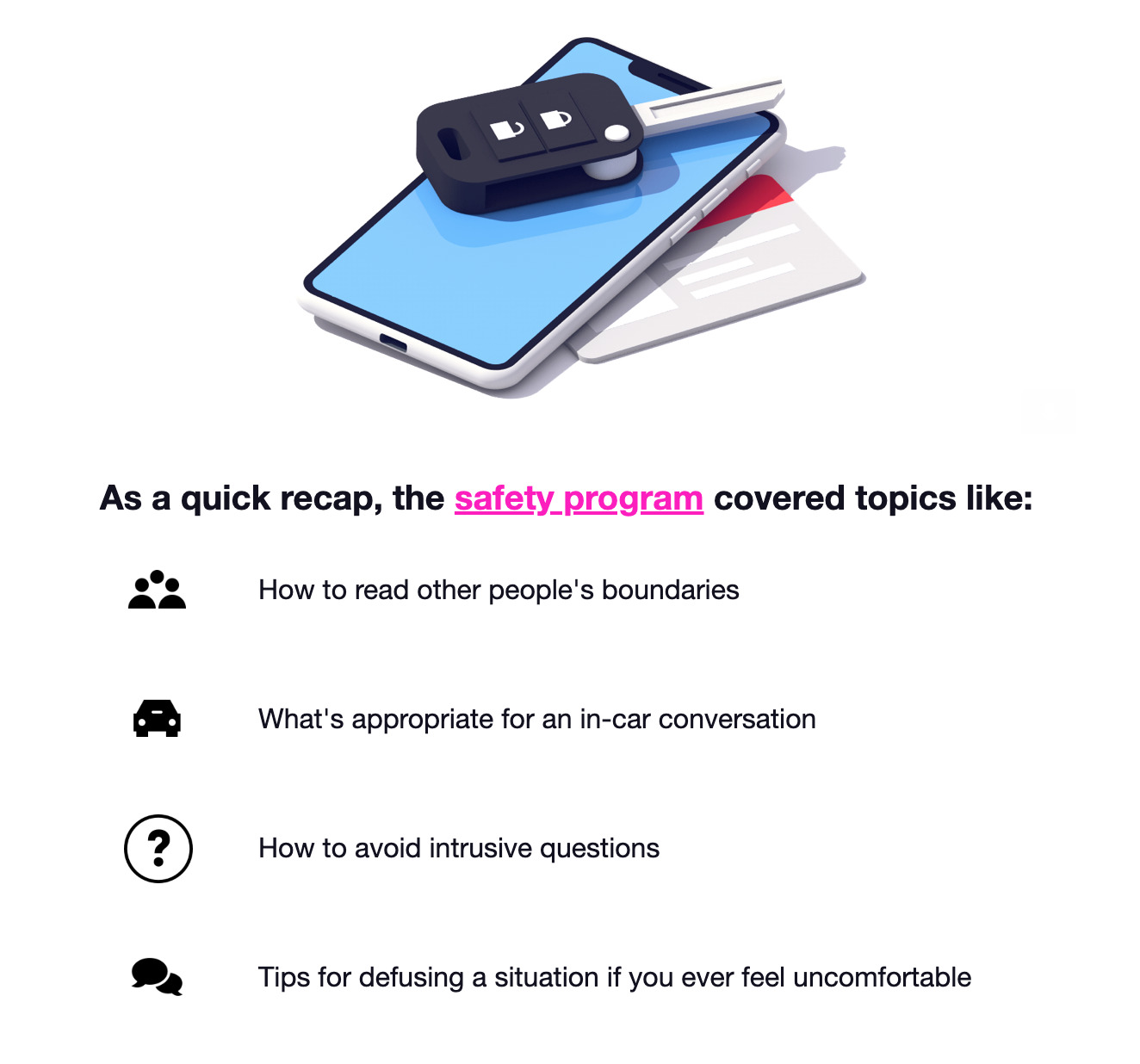
Key Takeaways
While I don’t like Lyft, my “partner,” to demand that I watch videos in order to keep driving, I do respect their intention. Driver and passenger safety is priority number one. If a passenger can’t get into a Lyft car and feel safe, then something is wrong. All passengers need to feel safe and not have to worry about sexual misconduct.
Similarly, drivers need to feel safe as well. Hopefully, Lyft will institute this type of educational program for passengers as well so belligerent yahoos begin to realize their behavior is wholly unacceptable.
Lyft is doing a good thing here. For once, they are taking decisive action ahead of Uber. It is rare that Lyft does something substantial before observing Uber take similar action. With this safety course, Lyft has established itself as the rideshare company truly committed to driver and passenger safety. Be safe out there.
Readers, have you been prompted to take Lyft’s safety training program yet? Were you offered an incentive to do so?
-Jay @ RSG
